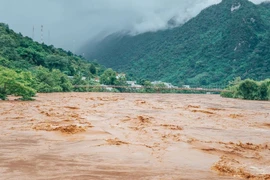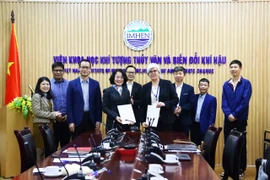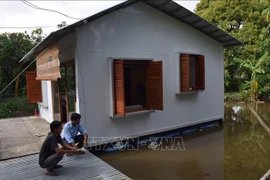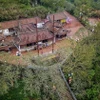Hanoi (VNA) – A consultation workshop convened in Hanoi on July 2 to present and gather feedback on climate change projections and communication for Vietnam.
Co-hosted by the Vietnamese Ministry of Agriculture and Environment’s Institute of Meteorology, Hydrology and Climate Change (IMHEN) and the Department of Climate Change, and the UK Met Office, the event formed part of the Asia-Pacific WISER (Weather and Climate Information Services) Programme funded by the UK’s Foreign, Commonwealth and Development Office (FCDO).
It drew a diverse group of stakeholders, including government officials, researchers, academics, and representatives from organisations like the Vietnam Women’s Union and the Vietnam Youth Federation, who weighed in on tailoring climate data for practical use.
In her opening remarks, IMHEN Director Assoc. Prof. Pham Thi Thanh Nga said the 2025 scenarios build on Vietnam’s 2020 projections, incorporating the latest findings from the Intergovernmental Panel on Climate Change’s sixth assessment report and insights from domestic and global partners. The focus is on extreme weather events, particularly in urban areas, and rising sea levels, which threaten Vietnam’s low-lying coastal regions. The goal is to guide policymaking, urban planning, and local adaptation strategies.
Dr. Truong Ba Kien from IMHEN outlined the use of three socioeconomic pathway (SSP) models, including SSP1-2.6, SSP2-4.5, and SSP5-8.5, mapping out sustainable, intermediate, and high-emission futures, respectively. These align with Vietnam’s commitment to net-zero emissions by 2050.
The 2025 scenarios track metrics like days exceeding 35°C, short-duration heavy rainfall, cold spells, droughts, and prolonged rains. High-resolution datasets, down to 3–5km for cities and provinces, enable precise modeling of local impacts.
A key feature is their digital accessibility. An interactive WebGIS platform allows users to search, download, and analyse data by region, sector, and timeline, boosting its utility in urban planning, agriculture, healthcare, and climate-resilient infrastructure development.
Emma Dyer from the UK Met Office shared projections from a high-resolution Convection-Permitting Model under the SSP3-7.0 pathway, forecasting a 2.0–3.7°C temperature spike by 2100 and a 0–4mm uptick in daily rainfall.
Coastal flooding risks also loomed large in discussions, alongside strategies to make complex data digestible for diverse stakeholders./.

See more
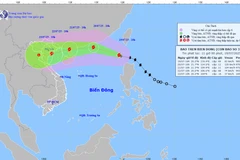
Northern provinces, coastal regions from Quang Ninh to Dak Lak urged to brace for Storm Wipha
In an official dispatch issued on July 19, the Ministry of Agriculture and Environment called on People’s Committees of provinces and cities in the northern region and along the coast from Quang Ninh to Dak Lak to closely monitor Storm Wipha’s developments and be ready in response to it.
Deputy minister calls for urgent action as Wipha storm forecast to hit Vietnam's mainland
The storm is forecast to bring torrential rains, particularly to the northwestern region, threatening widespread flooding, Hiep said at the Ministry of Agriculture and Environment's meeting in Hanoi on July 17.
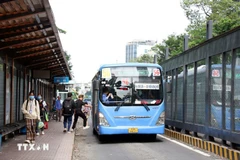
All buses in HCM City expected to run on green energy by 2030
This initiative supports the city’s green growth strategy and aligns with the national action plan on green energy transition and carbon emissions reduction, as directed by the Prime Minister.
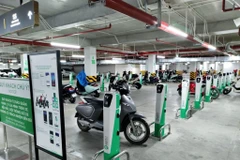
HCM City to convert 400,000 ride-hailing motorcycles to electric by 2029
HCM City currently has 600 public charging points, meeting less than 10% of the projected demand of 350,000-400,000 electric two-wheel vehicles in the future. Therefore, it is necessary to build 3,000 public charging and battery swap stations before December 2028.

Con Dao releases thousands of baby turtles to sea
Nearly 4,500 baby turtles were released into the ocean in the first half of 2025 as part of the Con Dao National Park’s long-running conservation efforts.

National parks of Vietnam, Laos recognised as transboundary world heritage site
Following the adjustment, the world natural heritage site is officially named “Phong Nha - Ke Bang National Park and Hin Nam No National Park”.
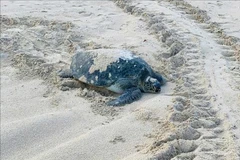
Rare sea turtle lays eggs on Lam Dong province's Hon Cau Beach
In recent years, to raise public awareness of marine conservation and sea turtle protection, the Hon Cau Marine Protected Area has actively engaged local residents and volunteers in beach patrols and nest ground monitoring. Thanks to these efforts, thousands of baby turtles have been successfully hatched and released back into the sea.

350kg wartime bomb safely defused in Nghe An
Military forces in the central province of Nghe An safely detonated a bomb weighing 350kg left over from the war on July 9.
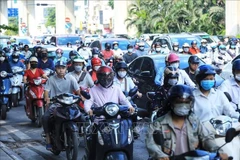
Emission standards for motorcycles to be issued in July
Under the draft, motorcycles produced before 2008 will be subject to the lowest level of inspection standards, level 1, while those manufactured from 2008 onwards will be assessed to a higher standard. Similar rules will also apply to motorised vehicles, with level 1 for those manufactured before 2016.

Vietnam steps up marine protection to support sustainable tourism
Marine tourism accounts for up to 70% of the sector’s total revenue, making it a vital contributor to local and national economic growth.
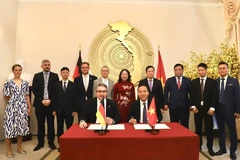
Vietnam, Germany set up energy partnership to advance green transition
Vietnam wishes for deeper cooperation with Germany in green hydrogen, workforce training, and building a robust energy ecosystem involving their small and medium-sized enterprises.

Vietnam to join international carbon offsetting scheme for aviation
The Ministry of Construction (formerly the Ministry of Transport) and the CAAV have actively implemented the necessary measures to meet CORSIA’s requirements.
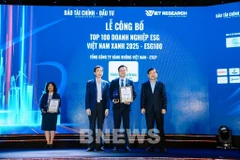
Vietnam Airlines honoured in Top 10 ESG companies in logistics sector
Vietnam Airlines has been honoured among the Top 10 ESG companies in Vietnam 2025 in the logistics sector and the Top 100 ESG companies in Vietnam 2025.
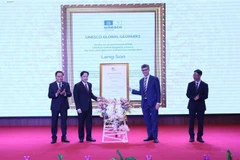
Lang Son becomes Vietnam’s 4th global geopark
Lang Son Global Geopark spans over 4,842 square kilometres, roughly 58% of the province, and is home to around 627,500 people. It features a rich blend of geological wonders and cultural heritage, including stunning caves and sinkholes such as Nguom Mooc Cave, Tham Lum and Ung Roac. Its biodiversity is also protected within the Huu Lien Nature Reserve.
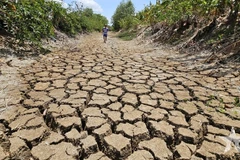
Water security – A strategic pillar for sustainable development

2025 Plastics Innovation Programme honours top solutions
The 10 winners are gearing up for a nine-month sprint to pilot and scale their projects, with a grand showcase slated for 2026.

Da Nang exhibition features rare insects endemic to Vietnam
To run until July 13, the Da dang sac mau con trung Viet Nam (The Diversity of Vietnamese Insects) exhibition at the Da Nang Museum features hundreds of rare insect specimens, aiming to spotlight the diversity and uniqueness of the country’s endemic insects.
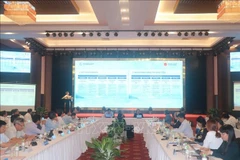
Mekong Delta climate resilience project benefits nearly 2 million people
Mariam Sherman, World Bank Country Director for Vietnam, Laos, and Cambodia, said the World Bank remains committed to working with the Vietnamese government to develop the next phase of climate resilience and transformation for the Mekong Delta.
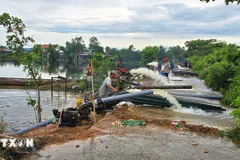
PM orders strengthened disaster preparedness ahead of storm season
Under the directive, the PM instructed relevant agencies to regularly inspect, supervise and proactively implement disaster prevention, response and rescue measures in line with their assigned roles and mandates, ensuring readiness, avoiding passivity or delays, and maintaining operational continuity amid ongoing political and administrative restructuring at levels.
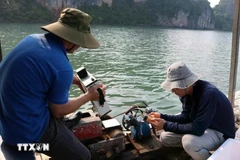
Vietnam pioneers use of AI and remote sensing to monitor seawater quality
According to Dr. Vu Anh Tuan, Deputy Director General of the Vietnam Space Centre and head of the project, this is the first study in Vietnam to simultaneously employ Sentinel-2 satellite data, advanced machine learning algorithms, and the Google Earth Engine (GEE) cloud computing platform to model and monitor key seawater quality parameters.
